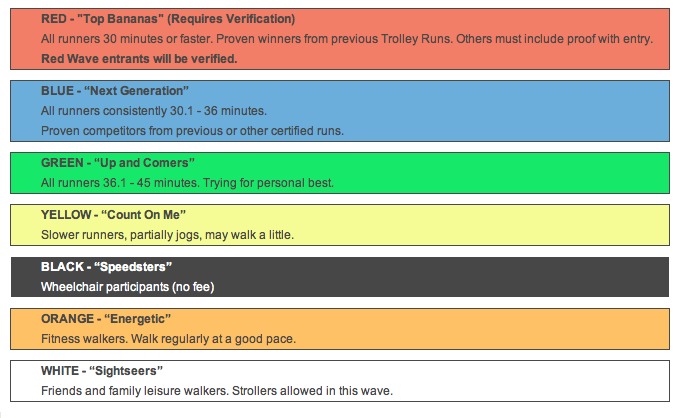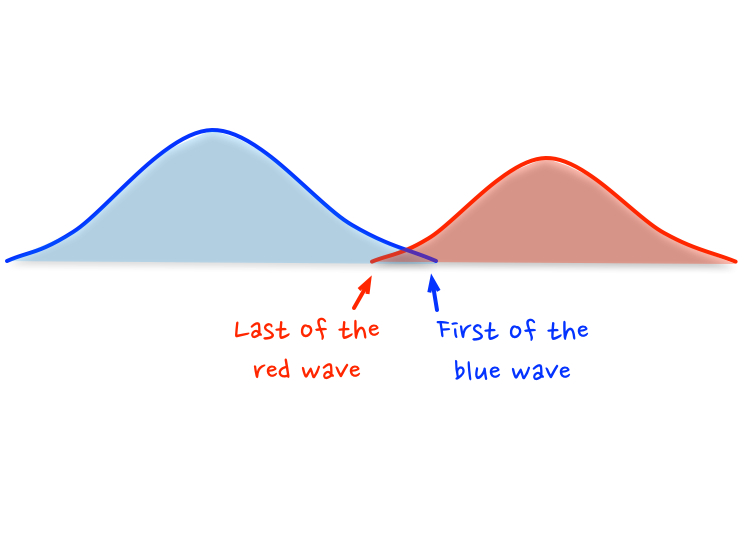With over 11,000 runners, the Trolley Run in Kansas City is one of my favorites. It’s a 4-mile, point-to-point run that is mostly downhill making it one of my faster runs of the year. It’s in the spring and well organized with several clearly defined waves.

I’ve always run in the green wave, but last year, I ran at a 8:29 pace and finished in 33:55, so I planned to step up to the blue wave. Through a clerical error, everyone on the team I was running with was registered as part of the red wave which requires a 7:30 pace or better. A week prior to the Trolley Run, I finished a 5K at a 7:19 pace. The combination of a lucky registration mistake, recent confidence from a fast finish, and a traditionally strong performance on this downhill course gave me the extra boost to skip the blue and go straight to the red wave.
Good news, I finished under 30 minutes (29: 38) and qualified to be part of the red wave again next year. There is certainly plenty of overlap in the various waves - people in the blue wave finish in red wave times and beat red wave runners who finish in blue wave times. As an avid student of variation, I believe many things can be better understood with bell curves and two-by-two grids.
Whenever you fall in the overlap area, you have a choice - put yourself in the red wave and be considered one of the slowest in your group, or put yourself in the blue wave and be considered one of the fastest in your group. I believe I ran faster in the red wave than I would have in the blue wave. I’ll never know for sure, but I felt motivated to chase my faster peers, and I sure as heck wasn’t going to let any blues pass me. You have to be realistic when choosing your comparison group, but stretching yourself to be in a more competitive framework provides greater development opportunities.
For me, it’s better to be the slowest member in the first wave, than the fastest member of the second wave, because the more bell curve you have in front of you, the more growth you have in front of you. Plus the red wave gets to board the shuttle buses first.

